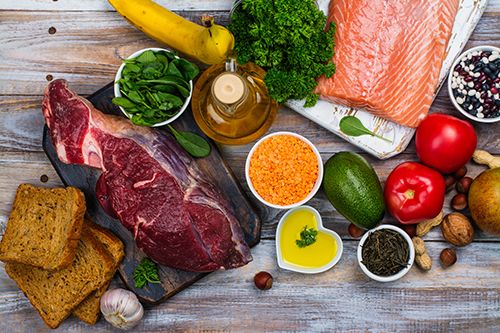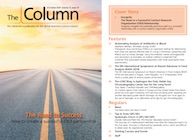Improving Food Quality Control Using UHPLC–MS
Researchers from the Technical University of Munich and the Leibniz-Institute for Food Systems Biology have developed a new method for the simultaneous analysis of odorants and tastants using UHPLC–MS.
Photo Credit: happy_lark/stock.adobe.com/

Researchers from the Technical University of Munich (TUM) and the Leibniz-Institute for Food Systems Biology have developed a new method for the simultaneous analysis of odorants and tastants using ultrahigh-performance liquid chromatography–mass spectrometry (UHPLC–MS).
The taste of a food is highly dependent on the odorants and tastants that it possesses, and its interactions. With consistency being one of the hallmarks of quality food produce, the challenge of controlling those odorants and tastants is vital. Manufacturers want to know and control the characteristic odour and taste profiles of their products, but in order to do this they need precise food analysis.
In this regard, one of the major challenges facing scientists is the amount of analytes available. A few trillionths of a gram for each kilogram of food is enough to perceive some odorants while tastants can only be identified as significantly high concentrations. Furthermore, tastants and aroma substances differ greatly in their chemical and physical properties. This results in the need for multiple methods to determine the nature and amount of the target analytes in the raw foods and materials. Aroma analyses in particular are very time-consuming and expensive, limiting the high-throughput analysis of numerous samples.
“We have now developed a new, innovative methodical approach that will enable us to examine food simultaneously for both odorants and tastants in a time-saving high-throughput process. It is based on an ultrahigh-performance liquid chromatography–mass spectrometry method typically used for taste analysis,” said Thomas Hofmann, Director of the Leibniz-Institute for Food Systems Biology and Professor of Food Chemistry and Molecular Sensory Science at the TUM
One particular feature of the new approach allows volatile odorous substances to be analyzed by means of an upstream enrichment or substance conversion step, which is otherwise not used for aromatic substances, saving valuable analysis time. According to the scientists, the new method makes it possible for the first time to analyze a large number of samples in a very short time with regard to their taste and odour giving ingredients.
The researchers hope to be able to further develop the method so that it can be used by food manufacturers in the future to quickly and easily monitor the flavour of food along the entire value chain and, if necessary, optimize it.
Reference
- C.K. Hofstetter, A. Dunkel, and T. Hofmann, J. Agric. Food Chem. 67, 8599–8608 (2019). doi: 10,1021/acs.jafc.9b03466

Removing Double-Stranded RNA Impurities Using Chromatography
April 8th 2025Researchers from Agency for Science, Technology and Research in Singapore recently published a review article exploring how chromatography can be used to remove double-stranded RNA impurities during mRNA therapeutics production.
The Effect of Time and Tide On PFAS Concentrations in Estuaries
April 8th 2025Oliver Jones and Navneet Singh from RMIT University, Melbourne, Australia discuss a recent study they conducted to investigate the relationship between tidal cycles and PFAS concentrations in estuarine systems, and offer practical advice on the sample preparation and LC–MS/MS techniques they used to achieve the best results.












